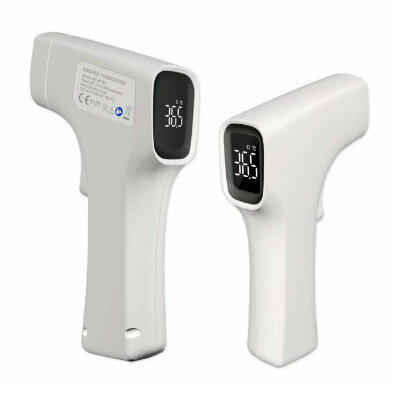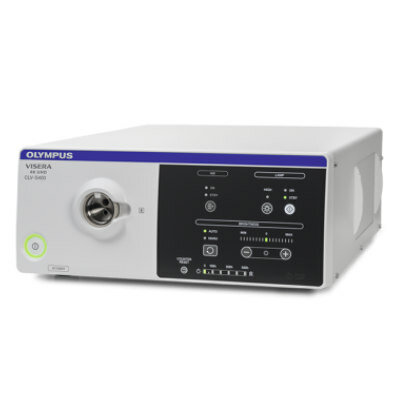Gravity-Powered Biomedical Device Paves Way for Low Cost POC Diagnostic Testing 
|
By HospiMedica International staff writers Posted on 14 Jul 2023 |

The need for simple, user-friendly, point-of-care devices continues to exist. Many prototype and market-ready devices aim to simplify diagnosis and crucial biomarker measurement processes using minimal liquid samples, power, and professional knowledge. These innovations aim to enhance healthcare delivery for the vast population residing in low-resource locales, far from well-equipped hospitals and qualified medical personnel. These tests generally share certain prerequisites: they need to transport, combine, and assess minute biological sample-containing droplets and their active ingredients, enabling specific biomarker measurements. High-end devices employ miniature electric pumps to facilitate these reactions, while others leverage the dynamics of liquids within microchannels, or microfluidics, to produce a suction-like effect. Each method comes with its own distinct benefits and challenges. Now, researchers have demonstrated a first-of-its-kind approach that only uses gravity to power point-of-care biomedical devices and also offers certain advantages over currently existing platforms.
Biomedical engineers at Duke University (Durham, NC, USA) have devised a completely new approach for building point-of-care diagnostic tools, which only leverages gravity to transport, mix, and manipulate the liquid droplets involved. This proof-of-concept uses readily available materials and minimal power to interpret results, making it a potentially beneficial option for use in settings with limited resources. The innovative gravity-based technique is based on a selection of nine commercially available surface coatings that can fine-tune the wettability and slipperiness at any given point in the device, thereby controlling how much droplets spread into pancakes or remain spherical, while also influencing their ease of movement down an incline.
By using these surface coatings in smart combinations, all necessary microfluidic elements required for a point-of-care test can be generated. For instance, if a certain location is extremely slippery and a droplet is positioned at a juncture where one side pulls liquid flat and the other pushes it into a ball, it acts like a pump and accelerates the droplet toward the former. The scientists devised numerous elements to manage the motion, interaction, timing, and sequence of multiple droplets within the device. Merging these elements, they fabricated a prototype test to measure human serum lactate dehydrogenase (LDH) levels. They carved channels into the testing platform to create designated routes for droplet passage, each coated with a substance preventing droplets from sticking along the way. Specific points were also pre-treated with dried reagents needed for the test, which are absorbed by droplets of simple buffer solution as they traverse the channels.
The maze-like test is then sealed with a lid equipped with holes for the sample and buffer solution to be dripped in. Once filled, the test is inserted into a box-shaped device with a handle that rotates the test by 90 degrees, allowing gravity to take over. The device also features a simple LED and light detector for swift and easy color-based test result assessment. This enables the scientists to label three different biomarkers with distinct colors for varying tests. In the LDH prototype test, the biomarker is marked with a blue molecule. A basic microcontroller measures the depth of the blue tint and the rate of color change, signifying the quantity and concentration of LDH in the sample, to yield results. This novel demonstration presents a new approach to the development of affordable, low-energy, point-of-care diagnostic devices. While the team intends to further refine their concept, they also hope it will spark interest and lead to the creation of similar tests by other researchers.
“Most microfluidic devices need more than just capillary forces to operate,” said Ashutosh Chilkoti, the Alan L. Kaganov Distinguished Professor of Biomedical Engineering at Duke. “This approach is much simpler and also allows very complex fluid paths to be designed and operated, which is not easy or cheap to do with microfluidics.”
Related Links:
Duke University
Latest Point of Care News
- Critical Bleeding Management System to Help Hospitals Further Standardize Viscoelastic Testing
- Point of Care HIV Test Enables Early Infection Diagnosis for Infants
- Whole Blood Rapid Test Aids Assessment of Concussion at Patient's Bedside
- New Generation Glucose Hospital Meter System Ensures Accurate, Interference-Free and Safe Use
- Unique Quantitative Diagnostic System Enables Immediate Diagnosis and Treatment at POC
- POC Myocardial Infarction Test Delivers Results in 17 Minutes
- Novel Diagnostic Hand-Held Device Detects Known Biomarkers for Traumatic Brain Injury
Channels
Artificial Intelligence
view channel
AI-Powered Algorithm to Revolutionize Detection of Atrial Fibrillation
Atrial fibrillation (AFib), a condition characterized by an irregular and often rapid heart rate, is linked to increased risks of stroke and heart failure. This is because the irregular heartbeat in AFib... Read more
AI Diagnostic Tool Accurately Detects Valvular Disorders Often Missed by Doctors
Doctors generally use stethoscopes to listen for the characteristic lub-dub sounds made by heart valves opening and closing. They also listen for less prominent sounds that indicate problems with these valves.... Read moreCritical Care
view channel
Deep-Learning Model Predicts Arrhythmia 30 Minutes before Onset
Atrial fibrillation, the most common type of cardiac arrhythmia worldwide, affected approximately 59 million people in 2019. Characterized by an irregular and often rapid heart rate, atrial fibrillation... Read more
Breakthrough Technology Combines Detection and Treatment of Nerve-Related Disorders in Single Procedure
The peripheral nervous system (PNS) serves as the communication network that links the brain and spinal cord to every other part of the body. It consists of two parts: the somatic nervous system, which... Read moreSurgical Techniques
view channel
Hydrogel-Based Miniaturized Electric Generators to Power Biomedical Devices
The development of engineered devices that can harvest and convert the mechanical motion of the human body into electricity is essential for powering bioelectronic devices. This mechanoelectrical energy... Read moreWearable Technology Monitors and Analyzes Surgeons' Posture during Long Surgical Procedures
The physical strain associated with the static postures maintained by neurosurgeons during long operations can lead to fatigue and musculoskeletal problems. An objective assessment of surgical ergonomics... Read more.jpg)
Custom 3D-Printed Orthopedic Implants Transform Joint Replacement Surgery
The evolving field of 3D printing is revolutionizing orthopedics, especially for individuals requiring joint replacement surgeries where traditional implants fail to provide a solution. Although most people... Read more
Cutting-Edge Imaging Platform Detects Residual Breast Cancer Missed During Lumpectomy Surgery
Breast cancer is becoming increasingly common, with statistics indicating that 1 in 8 women will develop the disease in their lifetime. Lumpectomy remains the predominant surgical intervention for treating... Read morePatient Care
view channel
Surgical Capacity Optimization Solution Helps Hospitals Boost OR Utilization
An innovative solution has the capability to transform surgical capacity utilization by targeting the root cause of surgical block time inefficiencies. Fujitsu Limited’s (Tokyo, Japan) Surgical Capacity... Read more
Game-Changing Innovation in Surgical Instrument Sterilization Significantly Improves OR Throughput
A groundbreaking innovation enables hospitals to significantly improve instrument processing time and throughput in operating rooms (ORs) and sterile processing departments. Turbett Surgical, Inc.... Read more
Next Gen ICU Bed to Help Address Complex Critical Care Needs
As the critical care environment becomes increasingly demanding and complex due to evolving hospital needs, there is a pressing requirement for innovations that can facilitate patient recovery.... Read moreGroundbreaking AI-Powered UV-C Disinfection Technology Redefines Infection Control Landscape
Healthcare-associated infection (HCAI) is a widespread complication in healthcare management, posing a significant health risk due to its potential to increase patient morbidity and mortality, prolong... Read moreHealth IT
view channel
Machine Learning Model Improves Mortality Risk Prediction for Cardiac Surgery Patients
Machine learning algorithms have been deployed to create predictive models in various medical fields, with some demonstrating improved outcomes compared to their standard-of-care counterparts.... Read more
Strategic Collaboration to Develop and Integrate Generative AI into Healthcare
Top industry experts have underscored the immediate requirement for healthcare systems and hospitals to respond to severe cost and margin pressures. Close to half of U.S. hospitals ended 2022 in the red... Read more
AI-Enabled Operating Rooms Solution Helps Hospitals Maximize Utilization and Unlock Capacity
For healthcare organizations, optimizing operating room (OR) utilization during prime time hours is a complex challenge. Surgeons and clinics face difficulties in finding available slots for booking cases,... Read more
AI Predicts Pancreatic Cancer Three Years before Diagnosis from Patients’ Medical Records
Screening for common cancers like breast, cervix, and prostate cancer relies on relatively simple and highly effective techniques, such as mammograms, Pap smears, and blood tests. These methods have revolutionized... Read moreBusiness
view channel
Johnson & Johnson Acquires Cardiovascular Medical Device Company Shockwave Medical
Johnson & Johnson (New Brunswick, N.J., USA) and Shockwave Medical (Santa Clara, CA, USA) have entered into a definitive agreement under which Johnson & Johnson will acquire all of Shockwave’s... Read more
















